Turbomolecular pump suction system basic operation
The turbo-molecular pump extraction system with separate roughing lines shown in Figure 1 operates in a similar manner to the diffusion pump extraction system. Before starting rough pumping, the high vacuum valve and roughing valve are closed while the foreline valve is open. First, close the front-stage valve, start roughing pump (also front-stage pump), open roughing valve to start vacuuming the vacuum chamber. Turn off the roughing valve when the pressure in the vacuum chamber drops to 150 ~ 100Pa, open the foreline valve, and then start the turbo molecular pump (need to connect the cooling system first). If the inlet of the molecular pump is filled with liquid nitrogen cold trap, liquid nitrogen should be filled after the pump is accelerated to rated speed (usually 5 ~ 10min).
1. Turbomolecular pump 2. Liquid nitrogen cold trap 3. Bleed valve 4. Ionization gauge 5. Heat conduction gauge 6. Roughing valve 7. Mechanical pump 8. Foreline pipe valve 9. High vacuum valve coarse pumping system configuration With the volume of the vacuum chamber and the size of different. For 500L / s or smaller turbo molecular pump, a two-stage rotary vane pump can be used; while the turbopumps with a capacity of 1000L / s and more adopt the mechanical pump as the primary pump's Roots pump unit. Close the roughing valve at a pressure of 100 to 150 Pa and switch the vacuum chamber to the turbomolecular pump. For some pumps, doing so causes a slight, but slow, instantaneous deceleration, but this has no effect on pumping. Just as the diffusion pump extraction system, the most important substance in the turbomolecular pump system is water vapor, and its pumping time will be governed by the liquid nitrogen trap pumping speed. Without a liquid nitrogen cold trap, the system will pump water slightly slower than a cold-trap diffusion pump of the same pumping speed. At the very beginning of a high-vacuum pumping process, the pump's large, unbaked interior surface will adsorb water and then be released again at a lower pressure. This effect is more pronounced in valveless systems because it may adsorb more water vapor than a valved system that is not exposed to air at pressures higher than 150 Pa.
When the system is shut down, close the high vacuum valve first, and if there is a liquid nitrogen cold trap, heat the trap. After the cold trap reaches the equilibrium temperature, turn off the foreline valve, and then cut off the power supply of the turbopump motor to decelerate the molecular pump rotor. In general, it takes ten minutes or more until the pump rotor stops completely. During the deceleration of the molecular pump rotor, the hydrocarbon vapors from the foreline hydrocarbons and turbomolecular pumps rapidly diffuse to the area above the pump inlet. To prevent backflow of the mechanical pump vapor and turbo molecular pump lubricant vapors, the molecular pump is deflated with a dry reverse flow of air after the power to the turbo pump motor has been switched off. For example, when the pump rotor speed drops to about 50% of the maximum speed, argon or nitrogen should be continuously charged somewhere above the pump inlet or above the rotor assembly until the pressure in the pump reaches atmospheric pressure. This can be done properly by filling the valve 3 (see Figure 1) with gas. Turbomolecular pumps should not be filled with air at atmospheric pressure often when operating at rated speed. This is detrimental to the life of the shaft. After the current level pipeline valve is closed, the mechanical pump system can be switched off, and the deflation valve can be used to deflate the mechanical pump. Turn off the cooling water immediately after shutdown to prevent internal condensation. In normal operation, the water temperature can be adjusted slightly above the dew point to eliminate possible condensate outside the pump body. Start the system to connect the cooling water flow, open the foreline valve, and then start the mechanical pump and turbo molecular pump. After the pump is accelerated to the rated speed (typically 5 to 10 minutes), the liquid nitrogen cold trap can be filled. The vacuum chamber can then be evacuated as described in the previous section.
1. Turbomolecular pump 2. Liquid nitrogen cold trap 3. Bleed valve 4. Ionization gauge 5. Heat conduction gauge 6. Roughing valve 7. Mechanical pump 8. Foreline pipe valve 9. High vacuum valve coarse pumping system configuration With the volume of the vacuum chamber and the size of different. For 500L / s or smaller turbo molecular pump, a two-stage rotary vane pump can be used; while the turbopumps with a capacity of 1000L / s and more adopt the mechanical pump as the primary pump's Roots pump unit. Close the roughing valve at a pressure of 100 to 150 Pa and switch the vacuum chamber to the turbomolecular pump. For some pumps, doing so causes a slight, but slow, instantaneous deceleration, but this has no effect on pumping. Just as the diffusion pump extraction system, the most important substance in the turbomolecular pump system is water vapor, and its pumping time will be governed by the liquid nitrogen trap pumping speed. Without a liquid nitrogen cold trap, the system will pump water slightly slower than a cold-trap diffusion pump of the same pumping speed. At the very beginning of a high-vacuum pumping process, the pump's large, unbaked interior surface will adsorb water and then be released again at a lower pressure. This effect is more pronounced in valveless systems because it may adsorb more water vapor than a valved system that is not exposed to air at pressures higher than 150 Pa.
When the system is shut down, close the high vacuum valve first, and if there is a liquid nitrogen cold trap, heat the trap. After the cold trap reaches the equilibrium temperature, turn off the foreline valve, and then cut off the power supply of the turbopump motor to decelerate the molecular pump rotor. In general, it takes ten minutes or more until the pump rotor stops completely. During the deceleration of the molecular pump rotor, the hydrocarbon vapors from the foreline hydrocarbons and turbomolecular pumps rapidly diffuse to the area above the pump inlet. To prevent backflow of the mechanical pump vapor and turbo molecular pump lubricant vapors, the molecular pump is deflated with a dry reverse flow of air after the power to the turbo pump motor has been switched off. For example, when the pump rotor speed drops to about 50% of the maximum speed, argon or nitrogen should be continuously charged somewhere above the pump inlet or above the rotor assembly until the pressure in the pump reaches atmospheric pressure. This can be done properly by filling the valve 3 (see Figure 1) with gas. Turbomolecular pumps should not be filled with air at atmospheric pressure often when operating at rated speed. This is detrimental to the life of the shaft. After the current level pipeline valve is closed, the mechanical pump system can be switched off, and the deflation valve can be used to deflate the mechanical pump. Turn off the cooling water immediately after shutdown to prevent internal condensation. In normal operation, the water temperature can be adjusted slightly above the dew point to eliminate possible condensate outside the pump body. Start the system to connect the cooling water flow, open the foreline valve, and then start the mechanical pump and turbo molecular pump. After the pump is accelerated to the rated speed (typically 5 to 10 minutes), the liquid nitrogen cold trap can be filled. The vacuum chamber can then be evacuated as described in the previous section.
1. Leakage interface valve 2. Turbomolecular pump 3. Bleed valve 4. Ionization gauge 5. Heat conduction gauge 6. Vacuum line valve 7. Electromagnetic bleed valve 8. Mechanical pump valveless system During deflation and shutdown, first Close the foreline valve, and wait for the pump speed to drop to 50% of the maximum speed before charging dry gas above the pump. When the system is filled to atmospheric pressure should close the deflation valve, otherwise it will cause the vacuum chamber over-pressure. Then shut off the mechanical pump and stop the cooling water as described above. There is no turbo molecular pump system with a single roughing line: first turn on the molecular pump cooling system and foreline valves, and at the same time start the pre-stage (coarse pumping) mechanical pump and turbo-molecular pump. If the roughing pump (forepump) is properly selected so that the roughing time of the vacuum chamber equals the acceleration (start up) time of the molecular pump, the vacuum system can pump the vacuum chamber to it without the return flow of pump oil Background pressure.
Before shutting down the system, it is necessary to close the foreline valve, then cut off the power of the molecular pump and turn off the cooling water. When the molecular pump speed drops to half of the rated working speed, dry gas is filled in the pump inlet. When the system is filled to atmospheric pressure, the deflation valve should be closed. Shut off the forepump system at any time after the foreline valve is closed as needed.
More Search Keywords: Pumping
| Measurements (m) | can be customized |
| Certificate |
CE,ASTM,ISO14001, ISO18000, ISO9001 Certificate,
and GS certificate from TUV Company of Germany.
|
| Color | Be customized |
| Materials |
a.Jumping Mat: Imported from United States
b.Foam Pad:EPE, waterproof closed-cell foam, mildew protection, uneasy to lose shape
c.Pad:PVC(500D,500D) fabric
d.Springs:Galvanized steel with good elastic performance
(Different material is available according to your needs)
|
| Advantage |
a.Anti-UV
b.Anti-static
c.Security
d.Environmental protection e.Uneasy to lose shape |
| Function |
1.Can protect children safe when they playing indoor, and let they enjoy the play freely 2.Suitable for improving Children energy and imagination 3.Helping them grow up happily, cleverly, and healthily |
| Installation | Professional CAD instruction, assembly procedure and project case . |
| Age Range | Children and adults |
| Apply to | Amusement park, gymnasium, Kindergarten, Preschool, etc. |
| Packing | Standard export packing |
| Warranty Period | 2 years on mats |
| Remark |
We can design and produce as your requirements |
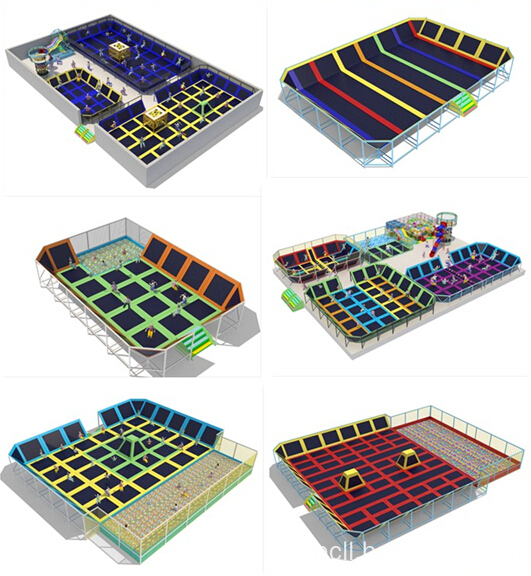
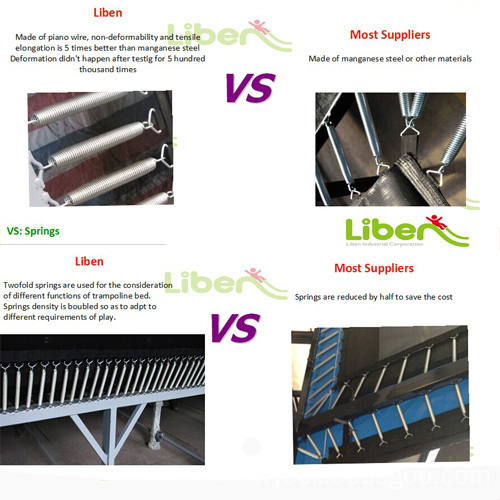
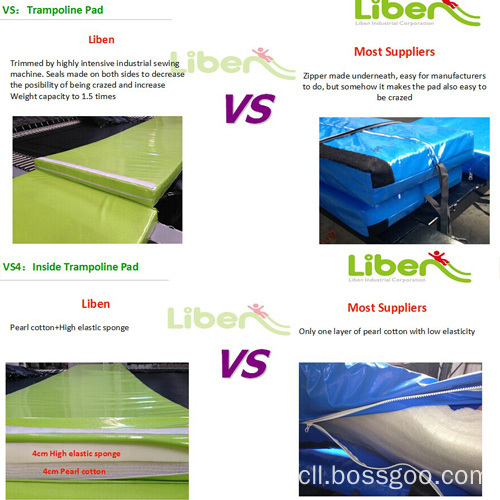

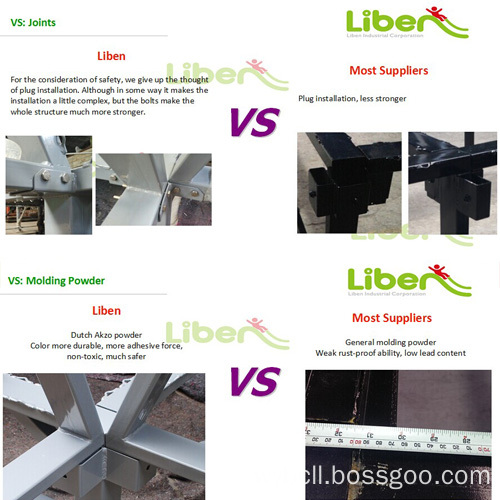
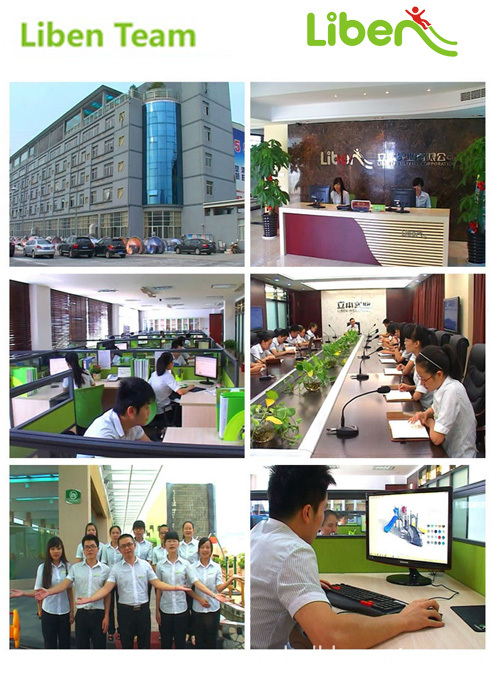
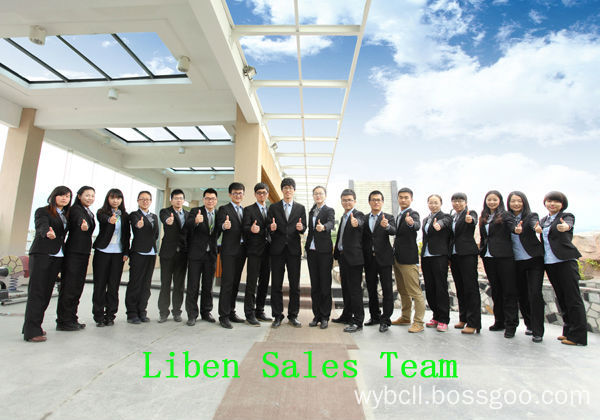
Playground Trampoline Courts, Trampoline For Fitness, Springs Trampoline Park,Commercial Trampoline Park
Liben Group Corporation , https://www.indoortrampoline.de